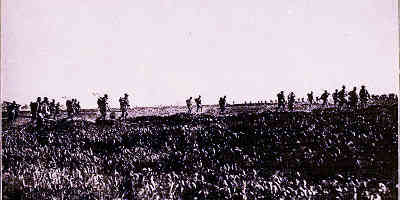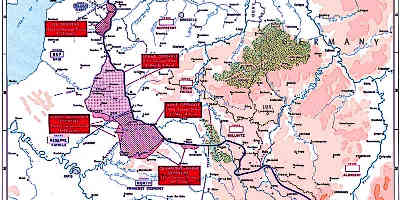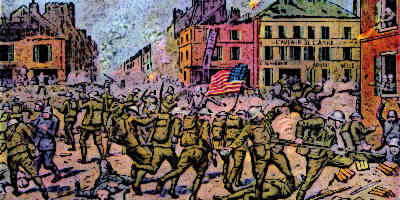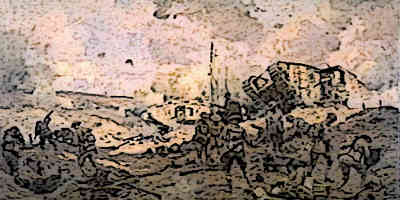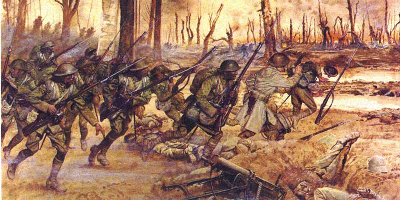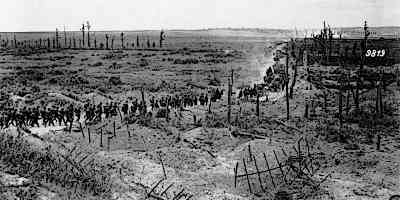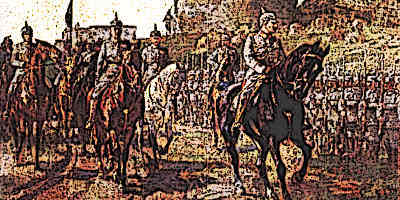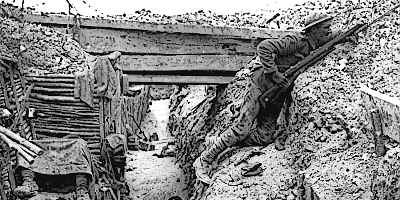Battle of Cambrai 1917
The assassination of Archduke of Austria was an important event that eventually led to World War I
Battle of Cantigny 1918
Battle of Cantigny was fought near village of Cantigny in northern France. It was fought on May 28, 1918.
Battle of Chateau-Thierry 1918
Battle of Chateau-Thierry near Chateau-Thierry in Aisne, France, was fought on July 18, 1918.
Battle of St. Quentin Canal
Battle of St. Quentin along the Hindenburg Line in France *Sept 1918 to October 1918.
Meuse-Argonne Offensive 1918
The Meuse-Argonne Offensive began on September 26, 1918. And it concluded on November 11, 1918
Second Battle of the Marne
Second Battle of Marne - Marne River near Paris, France, July 15, 1918 to August 6, 1918.
Sinking RMS Lusitania
RMS Lusitania was a British passenger ship. It was one of the largest passenger ships in use in 1915.
Top Ten Events of World War I
The First World War, was also known as The Great War and the 'War to end all wars'.
Trench Warfare in World War I
Trench Warfare for Soldiers during World War 1 and World War 2
How did World War 1 start?
Before the WW1 started, there was a lot of tension between different European nations. Also, many different alliances existed between different nations. These alliances later paved the way for the world war, since if one member of the alliance was attacked others felt compelled to support that member.
Although there were many political and economic reasons that led to the war, the war actually began when Austrian Archduke Franz Ferdinand was assassinated on June 28, 1914 in Bosnia. To avenge this assassination, Austria declared war on Serbia.
At the time, Serbia had an alliance with Russia, so when Austria attacked Serbia, Russia entered the war on the side of Serbia. Germany was allied with Austria, so Germany entered the war to support Austria.
France was a friend of Russia at the time, so it sided with the Russians and fought against Germans and Austrians. In response, Germans invaded Belgium and planned to directly attack France.
Britain simply wanted that no nation should gain too much power in Europe. So Britain entered on the side of France and against the Germans. In this way, the war between Austria and Serbia became a world war involving the whole Europe.
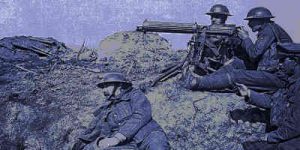
Where did the WW1 take place?
Most of the battles of the World War 1 took place on the two major fronts, the eastern front and the western front. The eastern front was located towards the eastern border of Germany and Austria. On the other side of this front was Russia and Romania.
The western front of the war was located along the western border of Germany and Austria. This front ran from the coast of Belgium in the north to the border of Switzerland. Most of the fighting along this front took place in Belgium and France.
American Involvement in the War
America in WW1
For most of the duration of the World War I, USA remained neutral. This changed when Germany started attacking American ships. The US government under President Woodrow Wilson then declared war on the German Empire in April, 1917 and entered the World War I on the side of the Allied Powers.
Soon, hundreds of thousands of American soldiers started arriving on the western front. Although the American soldiers were less experienced than the French or British in trench warfare, the sheer number of American troops and the resources added by USA to the war against Germany played an important role.
Result and Aftermath
The Allied Powers, now supported by USA, won the war. The Central Powers were defeated. The fighting came to an end on November 11, 1918 when both sides signed the Treaty of Versailles.
World War 1 – WW1 Fast Facts
- The start of World War 1 can be traced backed to the assassination of Archduke Franz Ferdinand in 1914.
- Most of the 1st World War Battles took place on the Eastern and Western Fronts.
- The USA had remained neutral for a long time during the 1st World War but joined after German U boats sank American ships.
- America Declared war on Germany in 1917, Woodrow Wilson was president at this time.
- The 1st World War is well known for it’s trench warfare.
- The Allied Powers that Included American and Britain we the victors in WW1.
- A famous document called the ‘Treaty of Versailles’ officially ended the First World War when both sides signed the peace treaty.
We hope you enjoyed this article on World War 1 – WW1 – if you would like to learn more about the first world war please see the links to further articles at the bottom of the page or you may be interested in our World War 2 articles.
Silent Night: The Story of the World War I Christmas Truce Paperback – October 29, 2002
